Elham Soltanikazemi
Fine-Tuning YOLOv5 with Genetic Algorithm For Helmet Violation Detection
Apr 13, 2023Abstract:The present study addresses the issue of non-compliance with helmet laws and the potential danger to both motorcycle riders and passengers. Despite the well-established advantages of helmet usage, compliance remains a formidable challenge in many regions of the world, with various factors contributing to the issue. To mitigate this concern, real-time monitoring and enforcement of helmet laws have been advocated as a plausible solution. However, previous attempts at real-time helmet violation detection have been limited by their inability to operate in real-time. To remedy this issue, the current paper proposes a real-time helmet violation detection system utilizing a single-stage object detection model called YOLOv5. The model was trained on the 2023 NVIDIA AI City Challenge Track 5 dataset and employed genetic algorithms in selecting the optimal hyperparameters for training the model. Furthermore, data augmentation techniques such as flip, and rotation were implemented to improve model performance. The efficacy of the model was assessed using mean average precision (mAP). Our developed model achieved an mAP score of 0.5377 on the experimental test data which won 10th place on the public leaderboard. The proposed approach represents a noteworthy breakthrough in the field and holds the potential to significantly improve motorcycle safety.
Deep Learning Prediction of Severe Health Risks for Pediatric COVID-19 Patients with a Large Feature Set in 2021 BARDA Data Challenge
Jun 06, 2022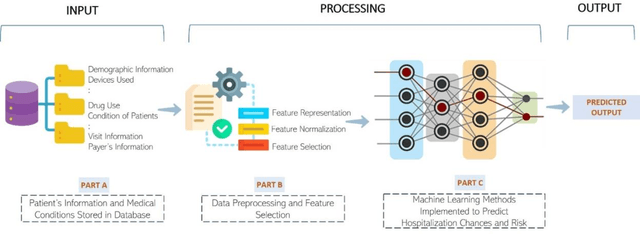

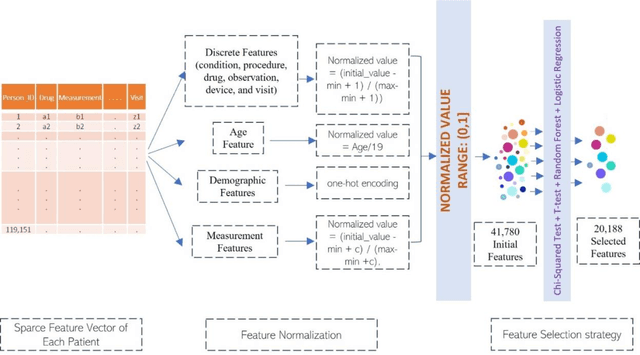
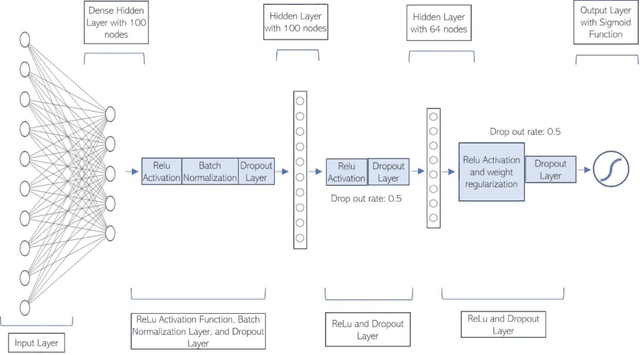
Abstract:Most children infected with COVID-19 have no or mild symptoms and can recover automatically by themselves, but some pediatric COVID-19 patients need to be hospitalized or even to receive intensive medical care (e.g., invasive mechanical ventilation or cardiovascular support) to recover from the illnesses. Therefore, it is critical to predict the severe health risk that COVID-19 infection poses to children to provide precise and timely medical care for vulnerable pediatric COVID-19 patients. However, predicting the severe health risk for COVID-19 patients including children remains a significant challenge because many underlying medical factors affecting the risk are still largely unknown. In this work, instead of searching for a small number of most useful features to make prediction, we design a novel large-scale bag-of-words like method to represent various medical conditions and measurements of COVID-19 patients. After some simple feature filtering based on logistical regression, the large set of features is used with a deep learning method to predict both the hospitalization risk for COVID-19 infected children and the severe complication risk for the hospitalized pediatric COVID-19 patients. The method was trained and tested the datasets of the Biomedical Advanced Research and Development Authority (BARDA) Pediatric COVID-19 Data Challenge held from Sept. 15 to Dec. 17, 2021. The results show that the approach can rather accurately predict the risk of hospitalization and severe complication for pediatric COVID-19 patients and deep learning is more accurate than other machine learning methods.
DRLComplex: Reconstruction of protein quaternary structures using deep reinforcement learning
May 26, 2022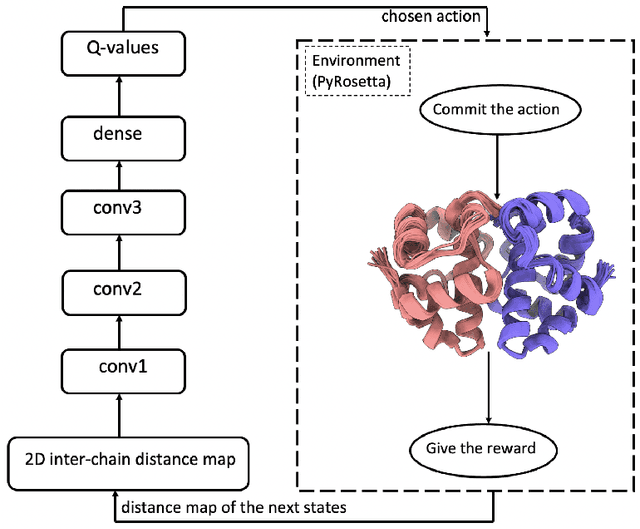

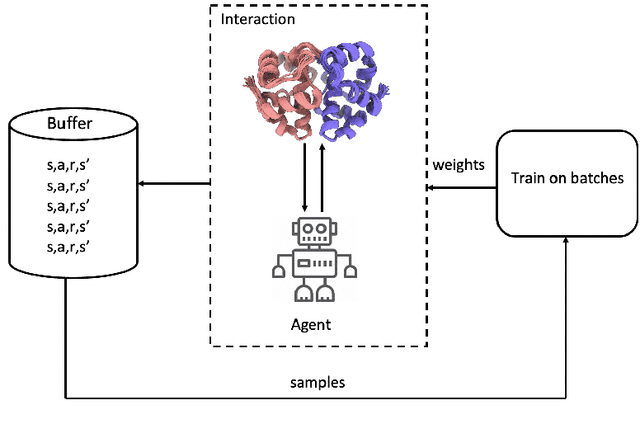

Abstract:Predicted inter-chain residue-residue contacts can be used to build the quaternary structure of protein complexes from scratch. However, only a small number of methods have been developed to reconstruct protein quaternary structures using predicted inter-chain contacts. Here, we present an agent-based self-learning method based on deep reinforcement learning (DRLComplex) to build protein complex structures using inter-chain contacts as distance constraints. We rigorously tested DRLComplex on two standard datasets of homodimeric and heterodimeric protein complexes (i.e., the CASP-CAPRI homodimer and Std_32 heterodimer datasets) using both true and predicted interchain contacts as inputs. Utilizing true contacts as input, DRLComplex achieved high average TM-scores of 0.9895 and 0.9881 and a low average interface RMSD (I_RMSD) of 0.2197 and 0.92 on the two datasets, respectively. When predicted contacts are used, the method achieves TM-scores of 0.73 and 0.76 for homodimers and heterodimers, respectively. Our experiments find that the accuracy of reconstructed quaternary structures depends on the accuracy of the contact predictions. Compared to other optimization methods for reconstructing quaternary structures from inter-chain contacts, DRLComplex performs similar to an advanced gradient descent method and better than a Markov Chain Monte Carlo simulation method and a simulated annealing-based method, validating the effectiveness of DRLComplex for quaternary reconstruction of protein complexes.
 Add to Chrome
Add to Chrome Add to Firefox
Add to Firefox Add to Edge
Add to Edge